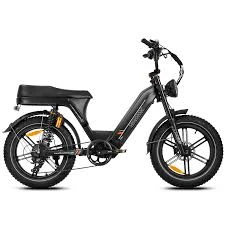
- Afrikaans
- Albanian
- Amharic
- Arabic
- Armenian
- Azerbaijani
- Basque
- Belarusian
- Bengali
- Bosnian
- Bulgarian
- Catalan
- Cebuano
- Corsican
- Croatian
- Czech
- Danish
- Dutch
- English
- Esperanto
- Estonian
- Finnish
- French
- Frisian
- Galician
- Georgian
- German
- Greek
- Gujarati
- Haitian Creole
- hausa
- hawaiian
- Hebrew
- Hindi
- Miao
- Hungarian
- Icelandic
- igbo
- Indonesian
- irish
- Italian
- Japanese
- Javanese
- Kannada
- kazakh
- Khmer
- Rwandese
- Korean
- Kurdish
- Kyrgyz
- Lao
- Latin
- Latvian
- Lithuanian
- Luxembourgish
- Macedonian
- Malgashi
- Malay
- Malayalam
- Maltese
- Maori
- Marathi
- Mongolian
- Myanmar
- Nepali
- Norwegian
- Norwegian
- Occitan
- Pashto
- Persian
- Polish
- Portuguese
- Punjabi
- Romanian
- Russian
- Samoan
- Scottish Gaelic
- Serbian
- Sesotho
- Shona
- Sindhi
- Sinhala
- Slovak
- Slovenian
- Somali
- Spanish
- Sundanese
- Swahili
- Swedish
- Tagalog
- Tajik
- Tamil
- Tatar
- Telugu
- Thai
- Turkish
- Turkmen
- Ukrainian
- Urdu
- Uighur
- Uzbek
- Vietnamese
- Welsh
- Bantu
- Yiddish
- Yoruba
- Zulu
Dec . 24, 2024 19:44 Back to list
Exploring the Benefits of Lightweight Electric Bicycles for Urban Commuting
The Rise of Lightweight Electric Bikes A Modern Transportation Revolution
In recent years, the demand for lightweight electric bikes has surged, transforming the way we think about urban transportation. These innovative vehicles combine the convenience of traditional bicycles with the power of electric motors, offering a solution to the pressing issues of congestion, pollution, and personal mobility. As cities become more populated and environmental concerns grow, lightweight electric bikes emerge as a practical alternative for commuters and recreational riders alike.
What is a Lightweight Electric Bike?
Lightweight electric bikes, often referred to as e-bikes, are designed with a focus on efficiency and portability. Typically weighing between 25 to 40 pounds, these bikes incorporate powerful, yet compact battery systems and motors, allowing for a seamless blend of human pedal power and electric assistance. They offer various levels of support, from fully electric modes for effortless rides to hybrid modes that allow riders to pedal while receiving electrical assistance.
Why Choose Lightweight Electric Bikes?
A key factor driving the popularity of lightweight e-bikes is their practicality. Unlike heavier traditional e-bikes, which can be cumbersome to lift or transport, lightweight models are designed for ease of use. This makes them particularly appealing for urban dwellers who may need to navigate stairs, elevators, or tight spaces in public transportation systems. Their portability also encourages users to combine cycling with other forms of transportation, fostering a multi-modal approach to commuting.
Moreover, lightweight electric bikes provide an environmentally friendly alternative to cars and other fossil fuel-powered vehicles. As cities grapple with the impacts of climate change and air quality issues, e-bikes offer a zero-emissions mode of transport that can help reduce urban congestion and carbon footprints. With the ability to travel at speeds of up to 28 mph, these bikes can efficiently cover distances that would typically require a car, thus decreasing reliance on personal vehicles.
Health Benefits
lightweight electric bike

In addition to their convenience and environmental benefits, lightweight electric bikes promote a healthier lifestyle. While they offer electric assistance, riders still engage in physical activity—a mixed-modal approach that enhances cardiovascular health and muscle tone. Studies have shown that individuals who use e-bikes tend to have higher activity levels than those who opt for traditional transportation methods, such as driving. Furthermore, the ability to tailor the level of electric assistance allows users to control the intensity of their workouts, making cycling accessible to a broader range of fitness levels.
Technological Innovations
The lightweight electric bike market has seen significant advancements in technology, resulting in improved performance, battery life, and overall user experience. New-generation lithium-ion batteries offer longer ranges and shorter charging times, making it feasible for daily use without frequent recharging. Additionally, the integration of smart technology, such as Bluetooth connectivity and GPS tracking, provides users with enhanced functionalities, including navigation assistance, ride statistics, and diagnostics.
Challenges and Considerations
Despite their many advantages, there are still challenges associated with the adoption of lightweight electric bikes. Infrastructure limitations in many cities can hinder e-bike riders, with a lack of dedicated cycling lanes and secure parking facilities posing significant barriers. Moreover, while lightweight models facilitate transportation, the initial investment can still be a deterrent for some prospective users. However, many governments are beginning to recognize the importance of e-bikes in sustainable transport, leading to initiatives that promote e-bike usage through subsidies and investments in infrastructure.
Conclusion
As we navigate an ever-changing world shaped by urbanization and environmental challenges, lightweight electric bikes offer a compelling solution that marries practicality with sustainability. Their ability to provide an efficient and healthy mode of transport positions them as vital players in the future of mobility. For commuters seeking an alternative to car travel, or for anyone looking to incorporate more physical activity into their lives, lightweight electric bikes present an exciting opportunity for exploration and adaptation. As technology continues to evolve and infrastructure improves, it is likely that the presence of e-bikes in our communities will only grow, contributing to a healthier planet and a more connected society.
-
The Ultimate Kids' Four-Wheeler Experience
NewsJul.09,2025
-
The Ultimate Guide to Mountain Bikes: Gear Up for Your Ride
NewsJul.09,2025
-
The New Age of Cycling: Electric Bikes for Every Rider
NewsJul.09,2025
-
The Best Kids Bicycles: Ride in Style and Safety
NewsJul.09,2025
-
The Best 3-Wheel Scooters for Kids: Fun, Safety, and Adventure
NewsJul.09,2025
-
Revolutionize Your Ride: Affordable Electric Bikes
NewsJul.09,2025
-
Finding the Perfect Mountain Bike for Every Rider
NewsJul.09,2025



